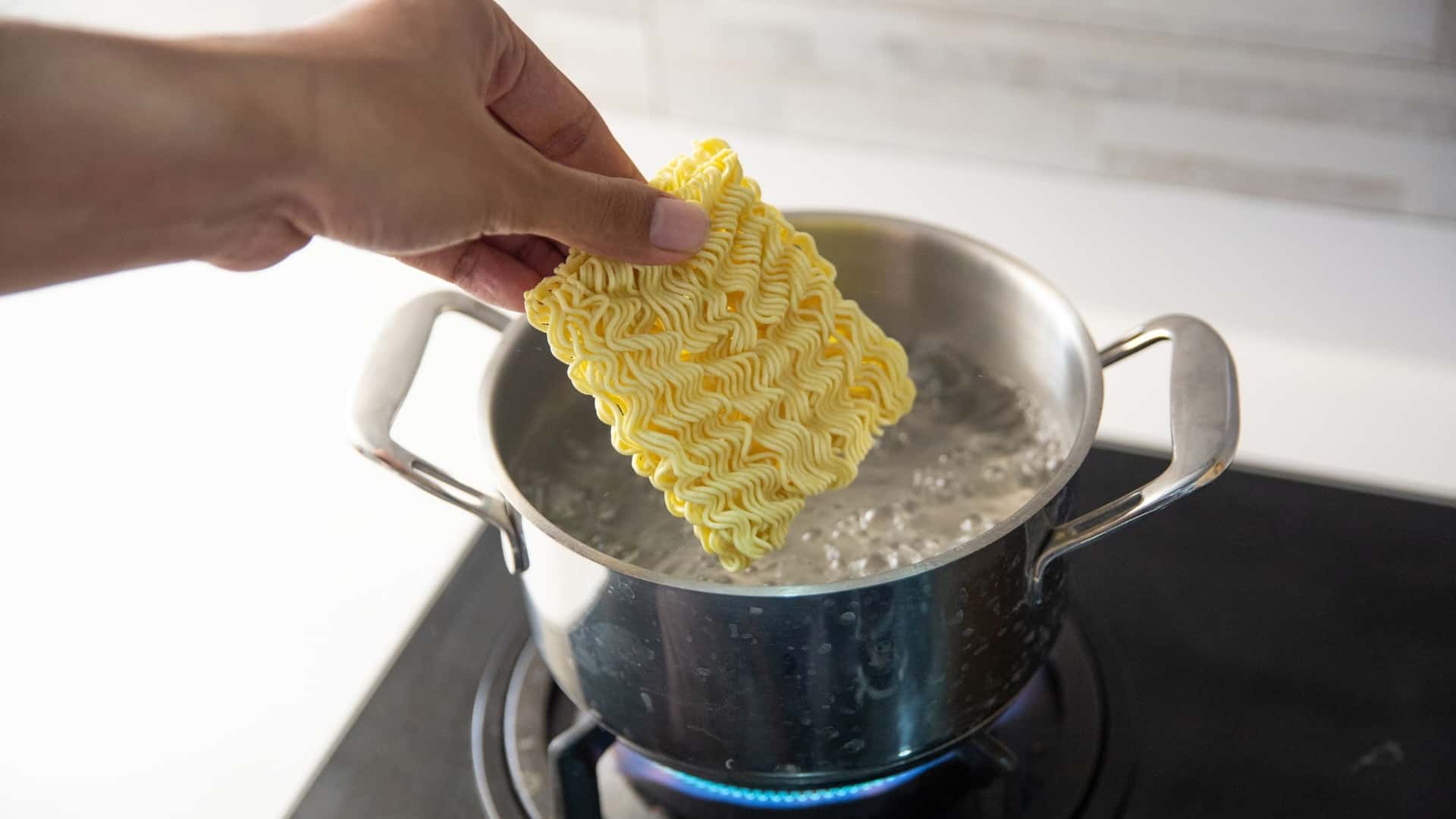Are Ramen Noodles Fried? The instant ramen are, here’s why
From the time when the Chinese first introduced ramen as la mian in Japan several centuries ago, to 1958 when the first pack of instant ramen was created, and cue to today when there are two museums dedicated solely to showcasing any and everything there is related to ramen!
Suffice to say the dish of humble origins has come a long way. So long in fact that instant ramen (or cup noodles) are now considered the most popular meal for students across the globe.

However, just as they’re rising in popularity, people are beginning to ask questions about the ingredients it contains and the manufacturing process. One of the most common questions asked is thus: Are ramen noodles fried?

Check out our new cookbook
Bitemybun's family recipes with complete meal planner and recipe guide.
Try it out for free with Kindle Unlimited:
Read for freeIn this post we'll cover:
Ramen Noodles: Ingredients and Manufacturing
The answer is, yes. Ramen noodles are fried, however, only if you’re referring to instant ramen noodles. Traditionally, ramen noodles were intended to be prepared using wheat flour, alkaline water, salt, and water. However, instant ramen contains a fifth ingredient – oil.
The oil wasn’t initially intended to be used as an actual ingredient in the noodles themselves, but owing to the astounding quantity of oil in the noodles that seeps in to replace water during the manufacturing process, manufacturers had to maintain transparency and list oil as one of the ingredients.
Also read: this is how you microwave your instant ramen like a BOSS
The Manufacturing Process
Preparing the block of noodles that you see in instant ramen packs goes something like this:
- The ingredients are mixed
- The dough is flattened
- Strips of noodles are cut
- The strips are divided into portions
- The noodles are steamed, dried, and cooled down
- The dried block of noodles is then packaged
- Oil is incorporated into the noodles during the drying process.
When the noodles are made, they contain a significantly high portion of water in them. To turn the water into steam, the noodles are deep-fried in oil at 140-160o C. This brings down the water content from 30-40% to 3-6%.
Why do we want the water to evaporate? If we allow the water to sit in the noodles, they can’t be packaged owing to the shorter shelf-life.
Plus, manufacturers are looking for a way to increase the porosity of the noodles. Thereby making it easier for them to take up water while they’re being cooked (the classic 3 minute cooking time for instant ramen).
Also read: these are the types of ramen broth you should try
Is Oil Content Dangerous?
Frying the noodles are necessary for dehydrating them and thereby increasing their shelf-life and making them cook quicker. However, the oil content in instant ramen or instant noodles is often more than the USDA regulated guidelines for fat content.
The USDA guidelines for fat content says that it shouldn’t exceed 20% of the total weight. However, sometimes the content of the oil does go up. This is why many people across the globe are concerned about the increasing dependence on instant ramen.
However, manufacturers have tried looking for solutions to this problem. The best that they could come up with is replacing vegetable oil with plant oil, specifically palm oil. This works out for both the consumers and the manufacturers because palm oil is a healthier alternative, and it’s cheaper.
Oil: A Necessary Evil
At this point, you might be asking yourself, if manufacturers can find a way to replace oil with healthier alternatives, why can’t they substitute oil for something else entirely?
They’ve tried and failed. In earlier days, manufacturers tried to substitute oil by air-drying the noodles. This served the same purpose as oil since the noodles just had to be dried anyway. However, air-drying the noodles led them to turn rubbery and the porous content was relatively lower than it was anticipated to be.
In recent times, the technique has been picked up by some brands and has been revamped as ‘blow-drying’ noodles. The noodles are exposed to hot air at 80oC for 5-6 minutes. This created ‘non-fried’ noodles with significantly fewer calories.
However, there still isn’t a perfect replacement for oil because the chewy, bouncy texture of instant ramen (the one that’s so beloved) is because of its oil content.
Oil thus retains the texture of the noodles and it’s shelf-life, but there’s one aspect it takes away – the taste. You might recall instant ramen noodles (without the broth) as being tasteless. In actuality, the noodles were supposed to have some taste to them. However, the dehydration process tastes away from them. Thereby further implicating oil.
Also check these top substitutes to ramen noodles to make it a little bit healthier
Conclusion
Instant ramen is the most common meal for students (and adults) all across the globe. From its humble origins to the popularity it has received today, instant ramen has come a long way. However, people have raised concerns over the oil content in the ramen noodles.
In a way, the oil is necessary to retain the texture of the noodles and to increase their shelf-life. The dehydration step is necessary for the ramen noodles to be able to be packaged as instant ramen.
Also read: these are the 9 best garnishes to put on top of your ramen
Check out our new cookbook
Bitemybun's family recipes with complete meal planner and recipe guide.
Try it out for free with Kindle Unlimited:
Read for freeJoost Nusselder, the founder of Bite My Bun is a content marketer, dad and loves trying out new food with Japanese food at the heart of his passion, and together with his team he's been creating in-depth blog articles since 2016 to help loyal readers with recipes and cooking tips.
